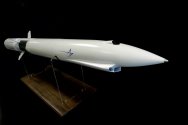I'll start here, because your assumption is that an LRASM has "full stealth", whereas I disagree.
It is impossible for LRASM to have full stealth because it is not shaped as a flying wing (ideally a hopeless diamond shape)
We have 5th gen fighters like the F-22, F-35 and J-20. And my understanding is that their stealth is optimised against X-Band radars. But the canards and tailfins are very susceptible to VHF or UHF radars did to a "resonance" effect. Thus, we have 6th generation aircraft (such as the J-36, J-50 and F-47) getting rid of any tailfins or canards. Why do this, unless features like tailfins or canards can be detected by radar?
I also recall the USAF reporting that the KJ-500 (with an L-Band radar) was capable of detecting opposing stealth fighters, and was vectoring Chinese fighters in parallel in response. That implies a significant detection range, based on the defending Chinese fighters keeping the US stealth fighters from beyond AMRAAM range.
And if we look at the JY-27V specifications, they claim a 250km+ range against the F-22 or F-35. But it fails to mention the B-2, which is a flying wing design.
So given the size of an LRASM and its physical design (where we can see tailfins and small wings), it should face the same radar detection issues as an F-22 or F-35.
---
Now, in the absence of any authoritative statements, this is my best guess and the reasoning why.
Comments?
Stealth is guaranteed. There are two ways to reduce a target's reaction time. One is with speed. The other is with stealth. The LRASM's strengths are its next-generation stealth, AI, and ECM.Why are you talking about supersonic Mach 2.5 antiship missiles?
We can see that both the US and Chinese militaries don't see their (continued) development as useful.
---
Again, I've highlighted that the Chinese military has decided that high-altitude, hypersonic (Mach 5+) antiship missiles are the way to go, because they are far more difficult to shoot down, plus it also ameliorates the issue of striking a distant ship target before it has travelled much distance.
---
But let's say a LRASM is an undetectable antiship superweapon, as you say.
For the Chinese military, such a capability would be fantastic.
They wouldn't have to worry about building a long-range detection and tracking network.
They could develop an extended-range version, which could be launched by trucks based on mainland China.
Then, such a weapon would easily sink every ship trying to approach the First Island Chain (and probably within the Second Island Chain as well)
Yet the Chinese military are too stupid to realise how effective an LRASM is, and build their own version?
And we're talking about 3 different branches of the Chinese military all being that stupid.
Namely the Rocket Force, the Navy and the Air Force.
---
We also see the US military publicly complaining about American hypersonic missiles being ridiculously expensive at $40+ Mn and $100+ Mn per missile. Yet they are still buying them.
We also see the US military complaining that American hypersonic missiles are 20x more expensive than equivalent Chinese hypersonic capability in the Western Pacific. The implication here is that if the US could get their costs down to Chinese levels, the Americans would completely ditch LRASM and go all in on hypersonics.
A supersonic LRASM was ruled out because low-altitude supersonic flight would create a massive infrared signature and a massive fuel consumption rate, even with a state-of-the-art ramjet. The US hypersonic anti-ship missile will be powered by a hypersonic scramjet.

The supersonic LRASM-B was canceled in 2012.
My opinion is that the US is confident against supersonic targets with its interceptor systems like the SM-6 and the evolved Sea Sparrow. The F-35C with DAS and the E-2D Hawkeyes will detect any supersonic attack missile at a distance. My guess is that the US will put all its eggs in two baskets: stealthy VLO cruise missiles and hypersonic attack missiles with scramjet propulsion.
I've already told you that these are different visions for ASuW. China may not have the same approach as the Americans, and that doesn't mean they're both right or wrong.
You might question whether stealth offers a greater advantage compared to speed and power. The missile can still be detected and evaded, while it's considerably more difficult to destroy or evade a full salvo of heavy, high-speed missiles, even if they're detected first. Perhaps... hence the debate.
Everything I've already said can be read here:
The LRASM is LO in several detection aspects.

